Over in the smoking ruins of Twitter, Ken Shirriff is wondering about a mislabeled mainframe:
If you are a mainframe connoisseur, head on over.
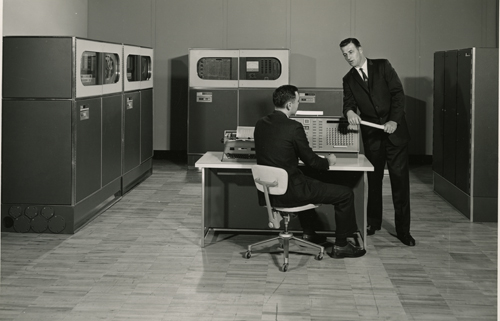
Over in the smoking ruins of Twitter, Ken Shirriff is wondering about a mislabeled mainframe:
If you are a mainframe connoisseur, head on over.

Good quiz - I would guess the shape of the cabinet cutouts will be instantly recognisable, to someone who recognises them! The shape and pattern of the ID badge might help. The front panel seems to me to have 2 columns of 10 indicators or buttons, and 8 rows of 10 indicators or buttons. That might be a clue, but 10 is an unexpected number. Here’s a blow-up:
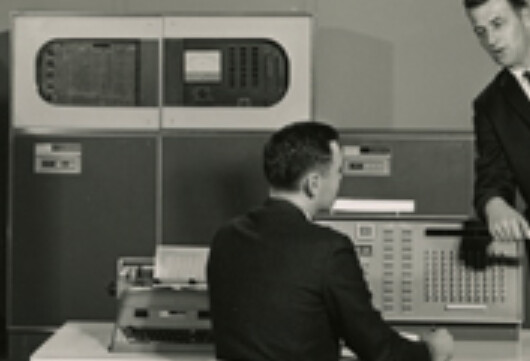
Obviously influenced by UNIVAC I/II/III with these round windows.
Probably 50s.
If it’s not a famous US mainframe maybe European, maybe Swedish?
Here UNIVAC I (large round door and round doors mainly bottom of cabinets), UNIVAC II had a more similar panel
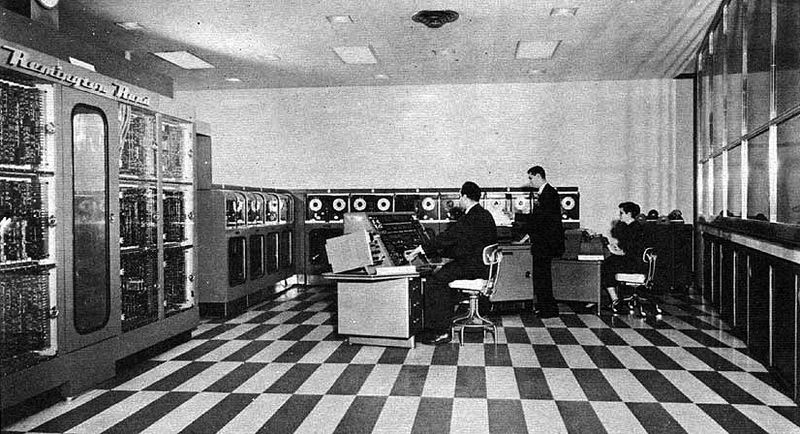
Another nice windows on this ORDVAC
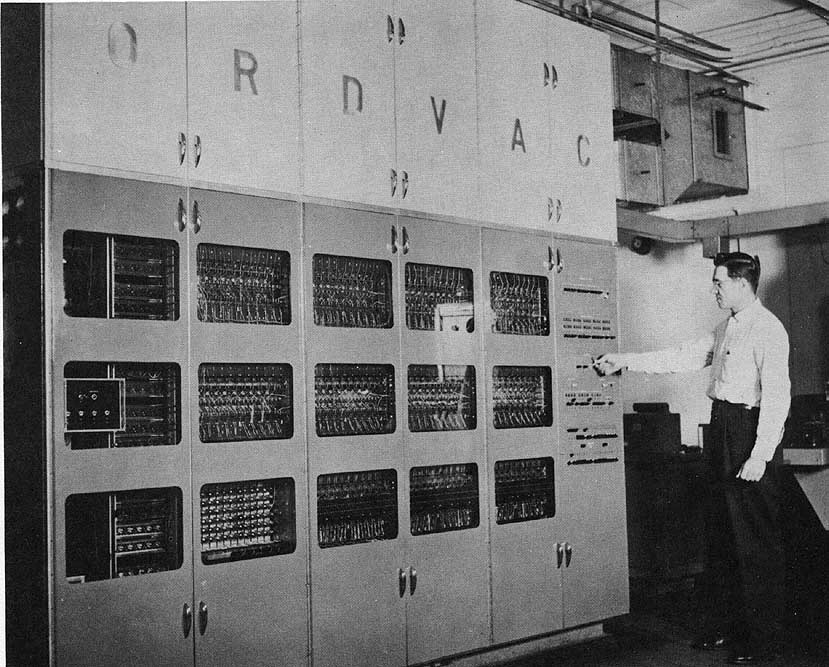
The original source of the photo in question is here
https://www.computerhistory.org/collections/catalog/102635171
Just a thought: the person standing is holding a slide rule. Is this perhaps a scientific machine? We don’t see a lot of I/O devices, as we might for a business machine.
There seems to be a cylindrical object to be seen in one of the windows of the unit on the left. What is this? Mercury delay line memory? A magnetic drum?
Marginally interesting: the plugs seen on the pedestal of that unit on the left. Would you do this with a one-off machine? Does this hint at a small series production? I this based on parts from another series?
There seems to be some kind of display above the button array on the console. Together with the 10 columns layout, this reminds somewhat of (electro-)mechanical calculators.
See the original post: it’s misidentified, according to Ken.
To me, the ID badges still looks much like IBM’s – that is, the top half. There had been machines with this kind of label: “IBM”, then a black bar with the model designator adjusted to the right and a polished metal bar below. However, I personally don’t know a photo, where this is paired with a button panel, like it seems to be here.
Eliot Noyes’ early design philosophy for IBM had been to expose the internals of the machines behind glass, as an element of the “natural beauty” of these machines (instead of hiding them in bulky art deco boxes, as it had been done before), e.g., compare the RAMAC. Moreover, there are Noyes designs with duotone casings and badges as described above (but these are already in his “angular period”). And there sems to be a faint Olivetti influence at play, as well, which would fit Eliot Noyes. So, maybe there is a hint in Eliot Noyes’ design history?
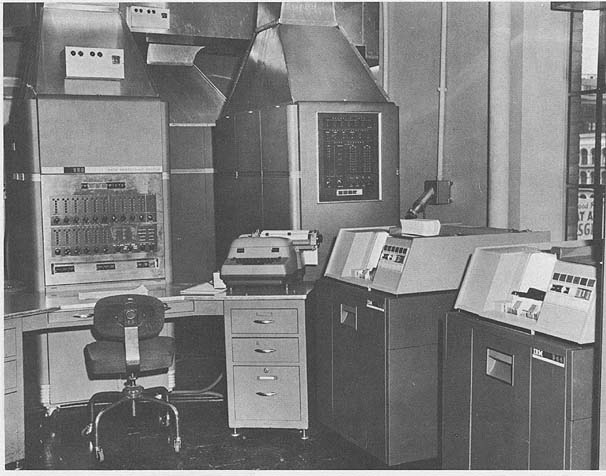
Compare the units to the right, color scheme and badges. This is actually the RAMAC, but there’s quite a diffrenece in the general idea behind the main unit and those peripherals (as in before and after Eliot Noyes).
(Source: BRL-61 Report, Ed Thelen’s site.)
I agree with the design language similarity - I wonder if it’s some kind of early marketing photo, showing some kind of engineering progress but not a product? It’s a staged and lit and decluttered set, but there are no logos!
Here’s another shot of UNIVAC II from Wikipedia
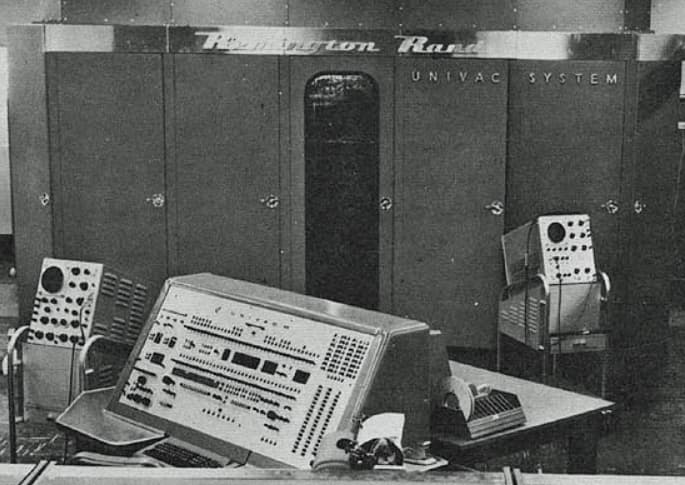
The UNIVAC II computer was an improvement to the UNIVAC I that the UNIVAC division of Sperry Rand first delivered in 1958. The improvements included the expansion of core memory from 2,000 to 10,000 words; UNISERVO II tape drives, which could use either the old UNIVAC I metal tapes or the new PET tapes; and some transistorized circuits (although it was still overwhelmingly a vacuum tube computer)
Maybe this is a Sperry Rand annual research report kind of thing?
Confirmation here of the rounded windows in UNIVAC1
The same photo on the same museum is titled IBM’s 1800 series (variant)
https://www.computerhistory.org/collections/catalog/102646593
But this is probably also wrong but I haven’t checked the complete 1800s series
here’s one good color photo
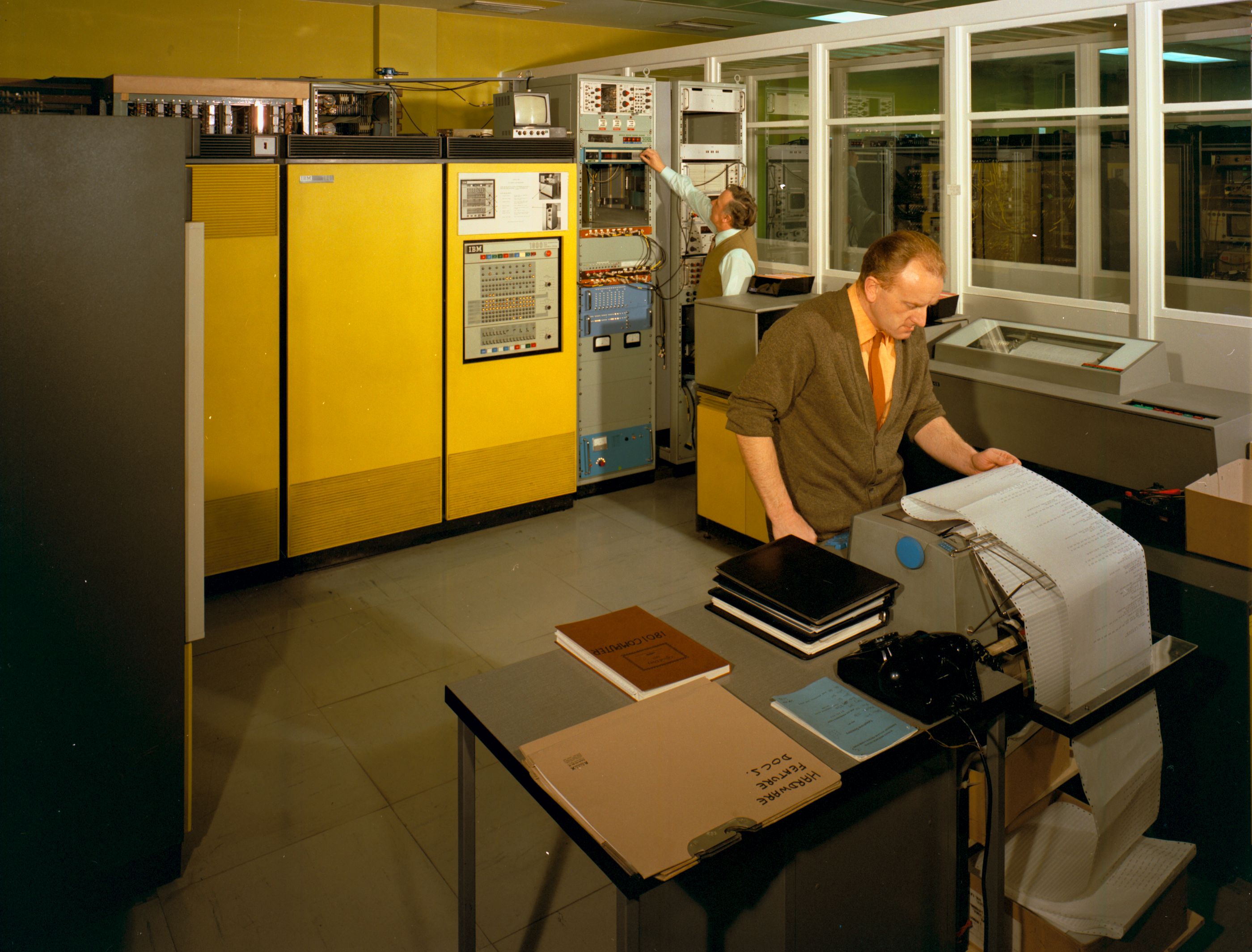
https://www.scorpion-engineering.co.uk/computing_history/archive.html
I wonder how a wrong credit is possible.
The photographer is still alive, but she’s ill and probably doesn’t remember.
I’m still searching the museum’s site for more photos of her.
Many photos are from fairs and some are prototypes.
To be fair, rounded windows seem to have been the dernier cri of the era: General Electrics had them, RCA as well, even a few IBM machines. UNIVAC may have started it, but it wasn’t a design language exclusive to them. Also, these appear to have been mostly vertically oriented, just like most of the cabinets of the era seem to emphasize vertical structure and horizontal repetition. (UNIVAC themselves seem to have transitioned to a strictly rectangular, hard edges design language by 1960. E.g., compare the LARC.)
This is actually one of the distinctive traits of this particular computer: how it breaks up the predominantly vertical cabinet design by its split-tone color scheme for a much more “airy” and lightweight impression. (Which suggests to me that this is a transistorized machine.)
The tailoring of the guy’s suit looks Russian. ![]()
The only thing that looks vaguely like a logo is in the top right of the cabinet on the right. But in this image that’s just a handful of pixels. I kept yelling ‘enhance!’ at my computer, but it didn’t seem to achieve much.
I don’t think it’s a mainframe. It may be something like a census or vote tabulator in the days of punched cards and those may be storage cupboards.
Checking more photos from the IBM 1800s series it is obviously the IBM logo, compare this cabinet top left background and also on the left
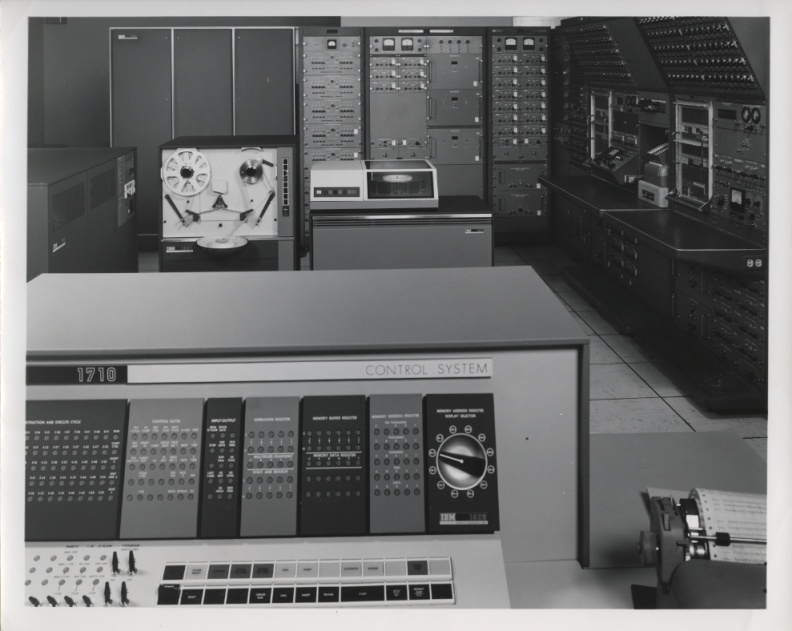
And IBM 7070

The cabinet is also similar (3 doors and color could be blue) but usually the cabinets are larger. I haven’t found the console or the oval windows.
The 1710 was used for industrial control chemical processes (ammonia, plastics, cement, paper, steel, used in testing and manufacturing control applications in electronic components, vehicle testing, discrete manufacturing of equipment e.g. automotive parts, and used in research applications in government, hospitals, and universities.
Looks like a marketing photo.
Below the oval windows could be another logo.
But what is below that logo. Buttons or maybe a counter like this or both (without the blue label). Next to the head is another cabinet without the oval window. Looks like there are 3 white buttons (or a longer counter)
And on top of the panel there’s a long label looking like this here a 7090 with Data Processing system written on it. The 1710 has the text Control system.

Very good observations there!
The more I look at this image, besides that I can’t figure out what those duo-tone units at the left and in the left background are, they don’t appear to contain or to be be part of the CPU, but to be peripherals or storage devices. The cabinet to the right doesn’t look much like a CPU, either, more like memory, or some channel, maybe? (Moreover, this cabinet standing that separated from the other components doesn’t really suggest a central role in this installation.)
Which really leaves the narrow unit behind the operator’s desk as the prime suspect. Could it be that this isn’t a mainframe, at all, but rather one of IBM’s “calculators” (in the 3-digits series)?
(There really doesn’t appear to be much “meat” to this, neither in the operator’s desk, nor to this narrow cabinet in the background.)
Notably, his could provide an explanation for the peculiar, calulator-like 10-column button array on the operator’s desk, which @EdS already observed.
There are some more on bitsavers in the PDF section (but I have currently no time to go through them.) At least some of them seem to have come with peripherals, as well.
Moreover, the entire “air” of this publicity shot may fit a calculator better than the electronic sanctum that were mainframe operations…